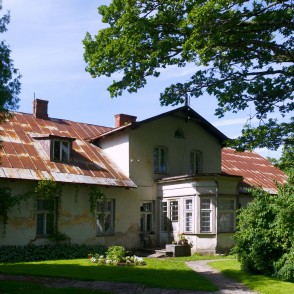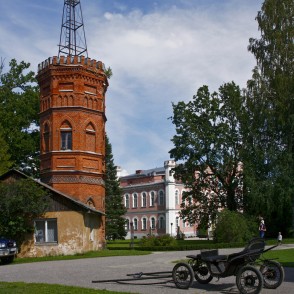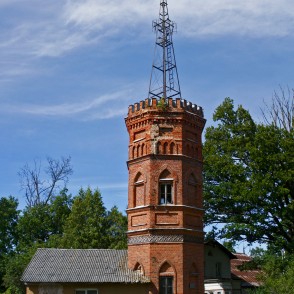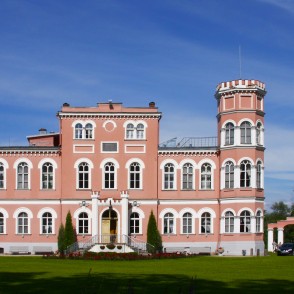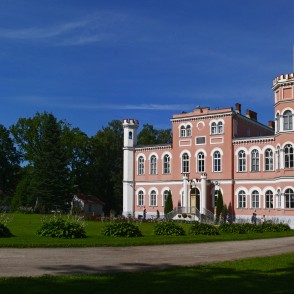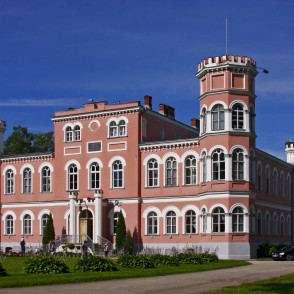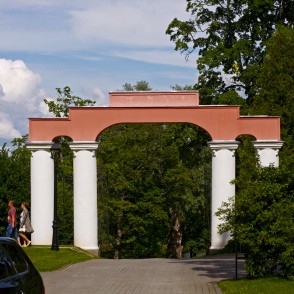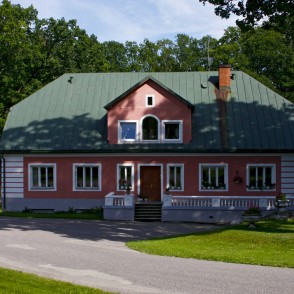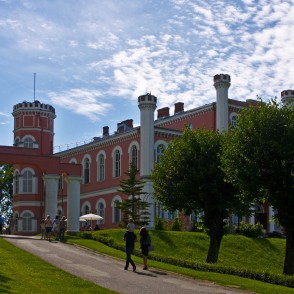The Birini Castle, built in 1860 on the hill next to Lake Birini, is admired for its elegant and expressive outline.
The castle was designed by architect Friedrich Wilhelm Hess from Riga. The building’s overall architectural style can be classified as Neo-Gothic but its interior design is in the Neo-Renaissance style and features a staircase adorned with wood carvings, historical tile stoves and extravagant rooms.
Today, the hotel in the Birini Castle is a popular venue for banquets and seminars. Guests will enjoy dining in the charming restaurant as well as walking trails and scenic outlooks in the wide park surrounding the hotel. Since 2009, the Birini Castle is used as a backdrop for the opening credits the #1 Latvian TV series - UgunsGreks (Fire), where action takes place in a family-run hotel.
While staying in the castle:
- Explore, get to know its history;
- Horseback or in a sled;
- Enjoy excellent meals at the restaurant;
- Go for a boat ride on Lake Birini;
- Relax at the baths in the castle;
- Examine the variety of plants, mushrooms, animals and biotopes in the nearby parks.
Find peace in parks
The Birini Castle is surrounded by parks. The Landscape Park stretches from the stables to the Gardener’s House, which now has also been transformed into a hotel. The Love Oak-tree stands in the middle of the park and tingles softly in wind, as it is the custom of newlyweds to hang pairs of tiny bells on its branches. For a longer walk, visit Mezaparks (the Forest Park) or Priezkalns (Pinehill) Park. The castle’s balcony affords the most spectacular view on the terrace garden and the lake beyond.
Ethnographic museum and pub
The road along Lake Dzirnavu will take you to the old watermill which now serves as an ethnographic museum and, during the summer season, also as a pub. Drink a cocktail on the wooden platform reaching out into the lake and watch fish swarming in the water, ready to gobble up any crumbs you might throw them. In winter, a carousel is put up on ice in the lake, as is the ancient tradition.
Restaurant
A restaurant is located in the vaulted basement of the Birini Castle. Courteous waiters, delicious food, white tablecloths, romantic lighting and your stay at the castle will become a true feast for the senses.
Limbaži district, Vidriži parish, Bīriņi, "Bīriņu pils", LV-4013
+371 29244927
hotel@birinupils.lv
www.birinupils.lv
www.latvia.travel
Bīriņi Palace (Latvian: Bīriņu pils; German: Buringshof) is a palace in the historical region of Vidzeme, in northern Latvia. The castle is surrounded by scenic parks, lakes, a manor house hotel, restaurant, rooms for weddings and seminars. Health serves itself from a variety of activities among horse riding, cycling and boating.
History
Bīriņi Palace was built by Riga architect Friedrich Wilhelm Hess between 1857 and 1860 for Baltic-German baron August von Pistohlkors. It has two floors with higher three floor risalit in the centre. All four corners of the building are adorned with towers – three of these towers are small, decorative but southwestern tower is larger. The palace is asymmetric as this was required by the rules of Neo-Gothic. It is surrounded by large landscape park. In the park there is the tomb of the von Pistohlkors family, although they were vandalised during the soviet period.
The interiors of the castle is done in Neo-Renaissance style with a wide entrance hall, balcony and double oak staircase featuring wood engravings. The dining hall has a molded wood ceiling and opens onto a terrace that descends to the lake. There is a richly decorated hall on the second floor of the palace with original light tile stoves.
Palace was rebuilt in the beginning of 20th century after the project of architect Rudolf Heinrich Zirkwitz. During these works facade was simplified, made less ornate. After the rebuilding in 1926 the palace was turned into health resort for employees of printing industry. Since this time up to 1995 there were various health resorts in the palace.
During the Soviet period the interior of the palace was adorned with paintings glorifying Soviet ideology. In 1994, the palace was rented and now it is a private property. Palace, buildings and landscape around it have been reconstructed since 1995, there being also a hotel in the palace.
en.wikipedia.org

